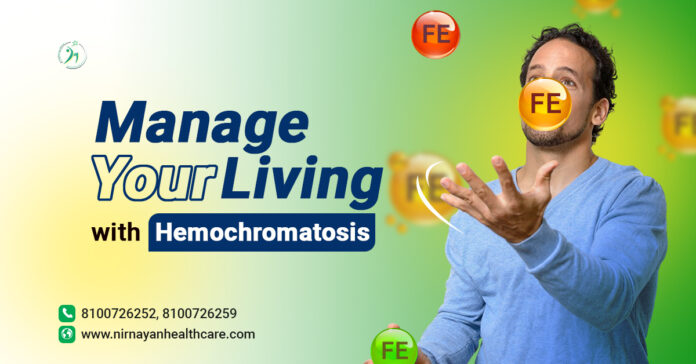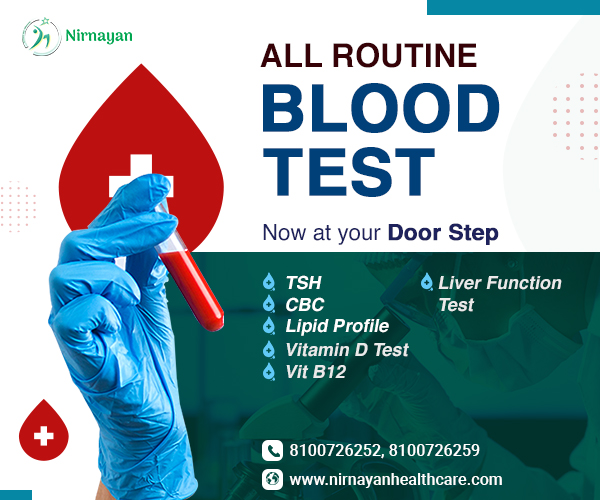Do you know if you carry anything that overloads for a long time, which makes you tired? Typically, yes, if something in your body is getting overloaded, it may burst out abnormally, along with various effects. Hemochromatosis, a common genetic disorder, is caused by excess iron overload in your body’s organs. The accumulation of excess iron in the body can cause life-threatening health conditions like organ failure, liver damage, and even liver cancer.
But for those people who are living with it, managing everyday becomes a crucial priority, as iron is essential for life, but too much can be harmful for your health as well. With lifestyle changes, dietary modifications, along a proactive mindset, living well with hemochromatosis is achievable. If you want more information about the disease of hemochromatosis, it’s already been discussed in our previous blogs.
Hemochromatosis explained:
More than a thousand cases have been diagnosed with hemochromatosis – a condition when your body’s iron level is too high due to abnormal absorption of iron in different body organs, also known as iron overload. This iron overload in multiple organs may have various health complications, along with organ failure. When your iron level is too high, it may contribute to various organs and tissues over time.
Keys that recognise hemachromatosis symptoms:
More than 80% of survey participants reported struggling with fatigue and joint discomfort. A variety of additional symptoms were also noted, such as sexual health issues and dermatological concerns. Significantly, 63% mentioned having ongoing and often painful symptoms—these individuals were more likely to have received a delayed diagnosis compared to those with milder or less frequent issues.
Common signs & symptoms of hemochromatosis:
The symptoms of hemochromatosis may differ with the condition, and also with age, from mild to severe.
- Joint pain
- Stomach pain
- Unexplained weight loss
- Lack of concentration
- Weakness in the overall body
- Unwilling to move
- Fatigue
- Irregular heartbeat
- Missed or unusual menstrual cycle
- Low libido
Living With Hemochromatosis:
People who are already living with hemochromatosis may have various difficulties in leading a normal life. Hemochromatosis plays a critical role in damaging organs with excess iron; the liver, heart, pancreas, and many other organs can be affected by this.
So each day is shaped by conscious nourishment, timely interventions like phlebotomy, and a strict balance in your diet.
What to eat for managing your iron level:
To treat your hemochromatosis level, you need first to be strict on your diet chart and follow the food items that help in reducing excess iron storage. Though there are some conflicts, for managing the right amount of iron level in the body, a diet for Hemochromatosis plays an essential part in developing the iron level in the blood.
Many fruits and vegetables can reduce high iron levels, and can help manage them to a normal level. Fruits like
- Spinach
- Beetroots
- Leafy green vegetables
- Strawberries.
- Drinking tea and coffee can help reduce iron levels in the body.
- Try to reduce intake of foods with iron, like red meat, iron-fortified foods, and seafood.
- Eat calcium-rich foods, like milk, yoghurts, cheese, and vegetables like broccoli, which easily absorb the iron and help in managing proper iron levels.
- Stop taking iron supplements or iron-rich medications as suggested by your medical professionals.
- People who have hemochromatosis should avoid vitamin C-rich foods, which may increase their body iron level.
- Avoiding alcohol can help you with a proper iron-reducing diet.
- Very low level of iron in the body, known as Anaemia – to manage this condition, consume iron-rich foods for anaemia recovery, like chicken, lentils, sardines, lamb meat, and many leafy vegetables can be recommended.
Manage iron levels by using proper utensils for your cooking:
Today, most cookware—like pots, pans, and skillets—features non-stick coatings, preventing any metal from leaching into food during boiling or frying. However, uncoated cast iron utensils were widely used in the past and are still common in some regions, depending on traditional cooking practices.
These iron utensils can release iron into food, especially when cooking acidic dishes with a low pH. For instance, the iron content in spaghetti sauce rose from 0.6 mg to 5.7 mg per 100 g after being prepared in a cast-iron pot. It leads high level of iron in food hemachromatosis by using utensils made of this iron. The takeaway is simple: avoid using uncoated iron cookware for cooking.
Medical conditions, if hemochromatosis is left unchecked:
If hemochromatosis is left delayed in checking, the excess iron may be stored in different organs and cause organ damage.
Due to excess iron stores in the liver, it may develop liver cirrhosis (scars in the liver), which also increases the risk of liver cancer later.
If iron deposits in the heart, it may cause irregular heartbeat, heart failure, and cardiovascular disease.
Excess iron in the pancreas may lead to damage to the cells, which affects insulin hormone production, which higher the risks of type 2 diabetes.
If excess iron is stored in the body joints, it may create joint pain, a common symptom of hemochromatosis.
Continuous care for managing hemochromatosis:
If you have hemochromatosis, it requires thorough care along with proper treatment.
Having medicines daily without skipping, as recommended by doctors.
Consult with your medical professionals if any condition or symptom is worsening.
Taking follow-ups about your iron level with regular blood tests at your nearest pathology lab.
Continue therapeutic phlebotomy treatment with expert analysis.
Contact Nirnayan Pathology Lab in Kolkata for your regular body checkups to follow up on your iron level.
Conclusion:
A normal iron level in blood helps in developing your health conditions and managing your blood circulation well. But excess iron can create various complications in your overall health, along with serious illnesses. Talk to your doctor regularly if you have hemochromatosis, and take regular follow-ups of your iron level. Following the advice of your medical professionals related to diet, lifestyle modifications, medications, and many more can heal the conditions of hemochromatosis.




